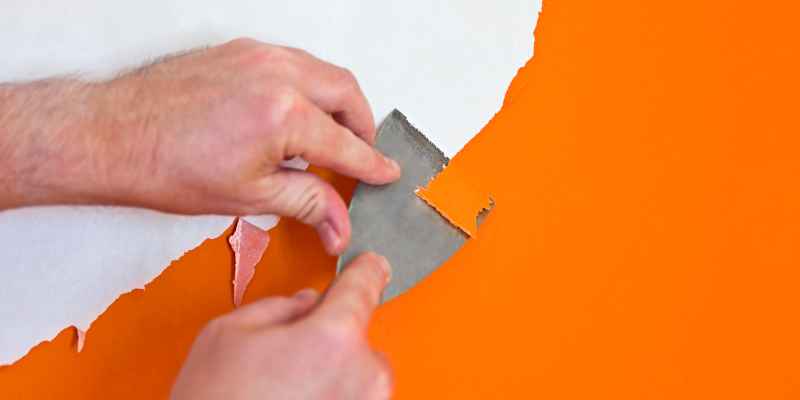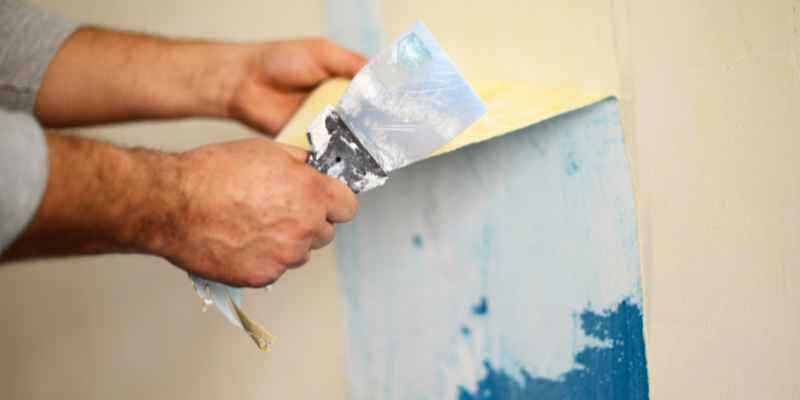To remove paint from wood without chemicals, you can use heat or sanding methods. By applying heat to the painted surface and scraping it off with a putty knife or using sandpaper to strip away the paint layer by layer, you can effectively remove paint from wood.
This article will provide detailed step-by-step instructions on how to safely and efficiently remove paint from wood without the need for chemical solutions. Whether you are looking to restore an old piece of furniture or renovate your wooden floors, these methods are environmentally friendly and budget-friendly alternatives to chemical paint strippers.
Read on to learn how you can easily remove paint from wood surfaces using non-toxic methods.
Mechanical Methods For Paint Removal
Mechanical methods for paint removal offer a chemical-free way to remove paint from wood. Discover effective techniques like sanding, scraping, and heat guns to bring back the natural beauty of your wooden surfaces.
Introduction
When it comes to removing paint from wood, there are various methods you can choose from. One of the most effective and eco-friendly ways is through mechanical methods. These methods involve using tools or physical force to scrape or sand away the paint without the need for any chemicals. Not only are these methods safe for the environment, but they also preserve the natural beauty and integrity of the wood. In this article, we will explore two popular mechanical methods for paint removal: scraping and sanding.
Scraping
Scraping is a simple yet effective method of removing paint from wood surfaces. All you need is a putty knife or a scraper tool with a sharp edge. Here’s a step-by-step guide on how to scrape paint off wood:
- Start by holding the scraper at a slight angle against the painted surface.
- Apply gentle pressure and move the scraper along the wood, working in the direction of the grain.
- Be careful not to dig into the wood or apply too much force, as this may damage the surface.
- Continue scraping until the majority of the paint has been removed.
- For any stubborn areas, you can use a wire brush or steel wool to help loosen the paint.
Sanding
Sanding is another effective method for removing paint from wood. It is especially useful for larger areas or when dealing with multiple layers of paint. Here’s how you can use sanding to remove paint:
- Begin by wearing protective goggles and a dust mask to prevent any particles from entering your eyes or respiratory system.
- Choose a medium-grit sandpaper (around 80-100 grit) to start with. If needed, you can switch to a finer grit sandpaper (120-150 grit) for a smoother finish.
- Hold the sandpaper firmly and sand the painted surface in the direction of the grain.
- Apply even pressure while sanding, but be careful not to press too hard as this may cause damage to the wood.
- Continue sanding until all the paint has been removed, and the wood surface appears smooth and clean.
Using these mechanical methods, you can effectively remove paint from wood without the need for any harsh chemicals. Remember to take your time, be patient, and use caution to avoid any unnecessary damage to the wood. Once the paint has been successfully removed, you can then proceed with any additional steps such as staining or varnishing to enhance the natural beauty of the wood.

Heat Methods For Paint Removal
When it comes to removing paint from wood, there are various methods you can choose from. One effective approach is using heat, which can help soften and lift the paint without the use of chemicals. In this article, we will explore two heat methods for paint removal: using a heat gun and using an infrared paint remover.
Using A Heat Gun
A heat gun is a versatile tool that can generate high temperatures for a multitude of projects, including paint removal. Here’s how you can use a heat gun to remove paint from wood:
- Prepare the area: Start by protecting the surrounding surfaces and objects with drop cloths or cardboard to prevent any accidental damage.
- Power up the heat gun: Plug in the heat gun and set it to a low to medium heat setting.
- Apply heat to the paint: Hold the heat gun about 2-3 inches away from the painted surface and move it back and forth in a slow and steady manner.
- Observe the paint: As you apply heat, the paint will start to bubble and blister. Use a scraper or putty knife to gently lift off the softened paint.
- Repeat if necessary: If there are multiple layers of paint, you may need to repeat the heating and scraping process until all the paint is removed.
- Clean the wood: Once all the paint is removed, wipe down the wood surface with a damp cloth to remove any residue left behind.
Using An Infrared Paint Remover
An infrared paint remover is a power tool that emits infrared heat waves to heat up and loosen the paint. Here’s how you can use an infrared paint remover for paint removal:
- Prepare the area: Just like with the heat gun method, ensure the surrounding surfaces and objects are protected to avoid any unintended damage.
- Set up the infrared paint remover: Plug in the infrared paint remover and adjust the heat output as per the manufacturer’s instructions.
- Hold the infrared paint remover close to the surface: Position the infrared paint remover approximately 2-4 inches away from the painted surface, ensuring even coverage of the area.
- Wait for the paint to blister: Allow the infrared heat waves to heat up the paint. As the paint starts to blister, use a scraper or putty knife to gently remove the softened layers.
- Repeat if needed: Depending on the thickness of the paint, you might need to repeat the process to remove all the layers.
- Clean the wood: After the paint is removed, clean the wood using a damp cloth to eliminate any residue.
Natural Methods For Paint Removal
Removing paint from wood without using harsh chemicals is not only better for the environment, but also for your health. There are several natural methods you can try that are effective in stripping paint from wood surfaces. In this post, we will explore these methods in detail under the subheading – Natural Methods for Paint Removal.
Vinegar
Vinegar is a versatile household item that can be used for various cleaning purposes, including paint removal from wood. Its acidic properties make it an effective natural paint stripper. Here’s how you can use vinegar to remove paint:
- Begin by mixing equal parts white vinegar and warm water in a bowl.
- Soak a clean cloth or sponge in the vinegar solution and wring out any excess liquid.
- Place the damp cloth or sponge on the painted area and let it sit for several hours.
- For stubborn paint, cover the soaked cloth or sponge with plastic wrap to keep it moist and leave it overnight.
- Once the paint has softened, gently scrape it off using a plastic scraper or a soft-bristled brush.
Vinegar is a safe and eco-friendly option for paint removal, but it may require multiple applications for stubborn or multiple layers of paint.

Baking Soda Paste
Baking soda is another natural ingredient that can effectively remove paint from wood surfaces. Here’s how you can create a baking soda paste for paint removal:
- In a small bowl, mix baking soda with enough water to form a thick paste.
- Apply the paste directly to the painted area, making sure to cover it completely.
- Leave the paste on the paint for several hours or overnight.
- After the paste has dried, use a plastic scraper or a soft-bristled brush to gently remove the softened paint.
- Wipe away any residue with a damp cloth.
Baking soda paste is a gentle yet effective method for paint removal, especially for smaller areas or delicate wood surfaces.
These natural methods for paint removal offer a safe and effective alternative to chemical-based paint strippers. Whether you choose to use vinegar or baking soda paste, always remember to test the method on a small, inconspicuous area of the wood before proceeding to avoid any damage. With a little patience and perseverance, you can achieve paint-free wood surfaces without harming yourself or the environment.
Conclusion
Removing paint from wood without using chemicals is not only effective but also safe for both the environment and your health. By using simple and accessible tools like heat guns, scrapers, and sandpaper, you can restore the natural beauty of your wooden surfaces.
Remember to take precautionary measures and work patiently to achieve the best results. So go ahead and give it a try – your wood will thank you!


